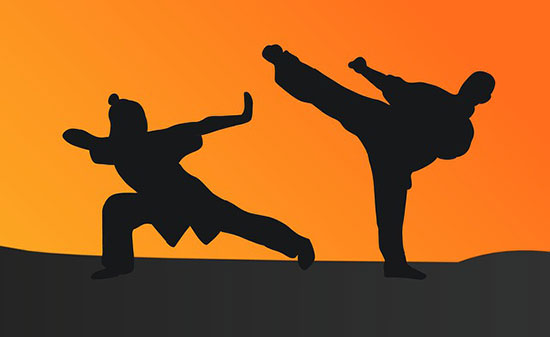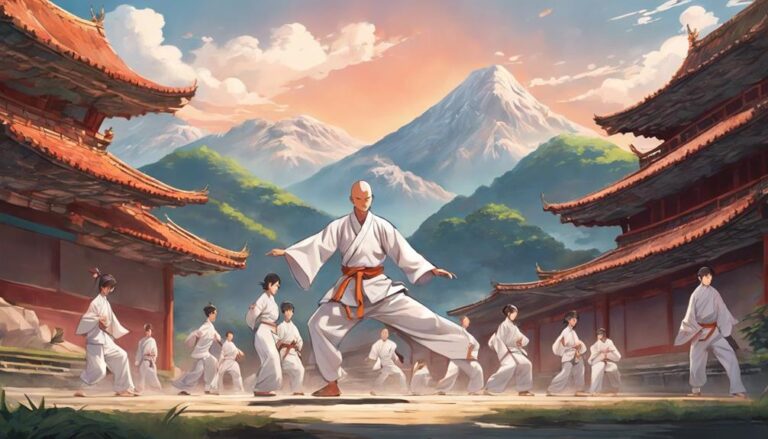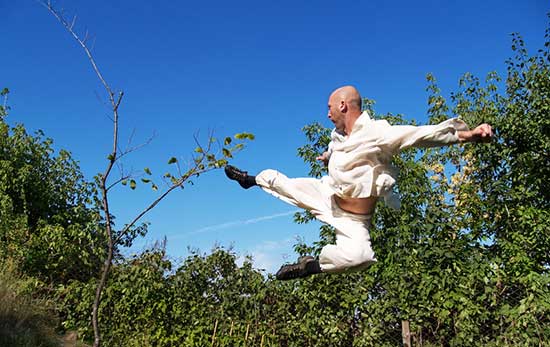This might seem like an obvious question, but there is no simple answer. Kung Fu, in its truest sense, is a philosophy and also a way of life in traditional Chinese culture.
As such, it has been adopted by many as a form of self-defense. However, it has evolved greatly over the years and has been adapted to suit the needs of its practitioners.
Contents
So, Is Kung Fu Offensive Or Defensive?
Kung Fu can be used as both offensive and defensive, depending on the situation in which it is used and the Kung Fu fighting style of the practitioner in question.
For example, one may use Kung Fu to protect oneself from attack and then use it offensively later in a fight of self-defense.
However, there are different types of Kung Fu styles, and for each type of Kung Fu style, there is an offensive and defensive component.
Offensive Kung Fu Fighting Styles
Kung Fu is a dynamic and versatile art form. As mentioned, it can be used for defense or offense. Kung Fu is not just about hand-to-hand combat, although it can certainly be used in such situations or training.
Some styles are simply designed to be faster and more efficient than others, and that’s their main purpose. Some examples of Offensive Kung Fu styles include;
Wing Chun
It has been described as “the ultimate fighting art.” It is designed to attack from all angles, using strong kicks and punches.
It uses fists, feet, knees, elbows, and above all, leverages to defeat the opponent. It is a form of Kung Fu that specializes in close-range combat.
Wing Chun practitioner usually does not carry a weapon but can use an ordinary object to defend themselves if they must.
Wing Chun has been developed over time, and it is thought that it originated in a Shaolin Temple.
Defensive Kung Fu Styles
The structure of Kung Fu makes it very easy to understand how it can be used for defense. The various elements of attack, defense, and counterattack that we see in Kung Fu are found throughout all martial arts (to varying degrees).
Many styles have a signature move that they use to end a bout or avoid damage. It is generally a technique that would be lethal if used in combat, but for the purposes of self-defense, the risk is taken out.
One widely recognized defensive Kung Fu art is;
Tai Chi
It is a style that is almost all “defensive,” a martial art that primarily uses soft, circular, slow movements to deflect an opponent’s energy.
This style is classified as “defensive” because it relies on movement and reaction to the movements of your opponents, so in essence, the goal is not to initiate a fight but rather stay out of one.
Offensive and Defensive Kung Fu Techniques in a Real Fight
There are many valuable qualities that are taught in Kung Fu. They can be used to make up one’s mind and lead the way when game hunting.
However, it is also useful to know how to fight back. These techniques, when used effectively, will give you an upper hand during a fight.
- The Butterfly Kick- The Butterfly Kick allows you to get in close with your opponent and deliver a powerful blow to the head or chest
- The Crane Wing- Employs a sweeping motion to make you more lethal when knocking the opponent off balance.
- The Tiger Claw- It is an effective technique used to land quick yet strong strikes on the opponent’s throat, eyes, or nose.
- The Bo Staff- employs a staff to disarm or disable an opponent.
- The Dragon Fist- Employs punches and kicks to injure your opponent.
Conclusion
Kung Fu is an umbrella name comprising a variety of fighting styles. It is important to understand that different fighting styles use different strategies in actual combat, and knowing how to use them effectively will give you an upper hand when it comes to life-or-death situations.
As such, it can be used for both defense and offense. You can use it to defend yourself against an attacker, and at the same time, you can use it offensively to defeat your opponent and bring a fight to a quick end.
If you are interested in learning authentic Chinese martial arts, I recommend that you join a Kung Fu school that is accredited and recognized by the Chinese Government.





